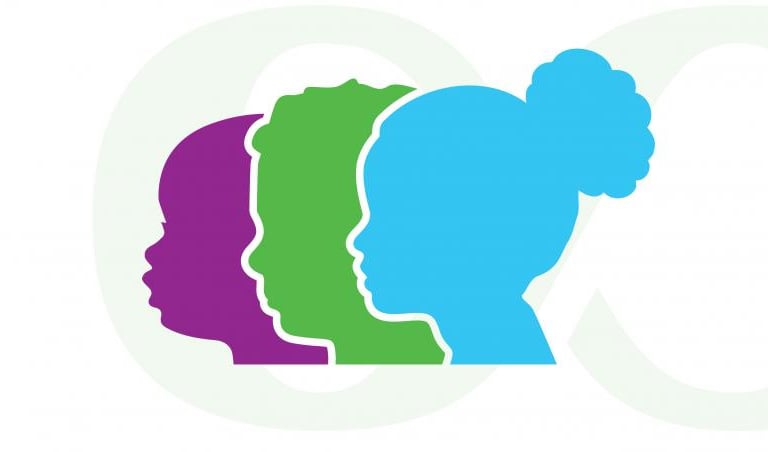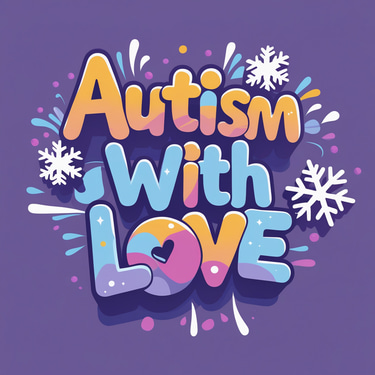Autism: A Spectrum of Experiences
Let's zoom in on autism for a bit. Autism is a neurodevelopmental condition that affects how people perceive the world and interact with others. It's a spectrum, meaning it affects people in vastly different ways. Some autistic individuals may have significant challenges with communication and daily living skills, while others might be incredibly gifted in specific areas but struggle with social nuances.
W.Love
4/14/20254 min read


Beyond the Surface: Understanding Unseen Disabilities and Autism
Ever heard the phrase "don't judge a book by its cover?" It's a cliché, sure, but it rings incredibly true, especially when we're talking about disabilities. We often have this picture in our heads of what a disability "looks like" – maybe someone using a wheelchair, or someone with a visible physical difference. But the truth is, disabilities come in all shapes and sizes, and a whole lot of them are completely invisible.
April is Autism Awareness Month, and it's the perfect time to dive into this topic. Autism is a prime example of an often-unseen disability. You might meet someone who seems totally "normal," someone who's articulate, holds down a job, and appears to navigate social situations just fine. But beneath the surface, they could be facing a daily barrage of challenges that you'd never guess.
What Are Unseen Disabilities, Anyway?
So, what exactly is an unseen disability? Basically, it's any physical, mental, or neurological condition that limits a person's movements, senses, or activities, but isn't immediately obvious to others. Think about it: chronic pain, fatigue, certain mental health conditions, and, yes, autism, all fall under this umbrella.
The tricky thing about unseen disabilities is that people often make assumptions. If you look "fine," the assumption is that you are fine. This can lead to a whole host of problems, from lack of understanding and support to outright disbelief. It's like expecting someone with a broken leg to run a marathon just because they aren't wearing a cast that day. The injury is still there, even if it's not visible.
And here's where the "unseen" part comes in big time. Many autistic people, particularly those who are high-functioning, have learned to "mask" or camouflage their autistic traits. They might force themselves to make eye contact, rehearse social scripts, and suppress stimming behaviors (like hand-flapping or rocking) in order to fit in.
The Mask: Why "Looking Normal" Doesn't Mean It's Easy
This "masking" is a double-edged sword. On the one hand, it can help autistic individuals navigate social situations, maintain friendships, and succeed in school or at work. It's a survival mechanism, a way to protect themselves from judgment and exclusion.
But here's the kicker: masking is exhausting. Imagine spending every social interaction consciously analyzing every facial expression, every tone of voice, every unspoken rule. It's like being an actor constantly playing a role, and it takes a massive toll on mental and emotional energy.
Think of it like this: that person who seems so calm and collected at the office might be completely drained by the time they get home, needing hours of quiet and solitude to recover. That student who gives a brilliant presentation might have spent days agonizing over every word, rehearsing every gesture, and battling intense anxiety.
The Challenges Beneath the Surface
So, what are some of the hidden struggles that autistic people might face, even if they seem perfectly fine on the outside?
Sensory Overload: The world can be an overwhelming place for autistic individuals. Everyday sights, sounds, smells, and textures can be amplified, leading to sensory overload. A crowded shopping mall, a noisy restaurant, or even bright fluorescent lights can trigger anxiety, discomfort, or even meltdowns. Someone might seem fine in a meeting, but secretly be battling the hum of the air conditioner or the scratchy fabric of their clothes.
Social Communication: Social interaction is often a minefield. Autistic people may struggle with interpreting social cues, understanding sarcasm, or navigating the complexities of small talk. They might be incredibly articulate but still miss the subtle signals that neurotypical people take for granted. That person who seems quiet at a party might be desperately trying to understand the flow of the conversation and feeling overwhelmed by the social demands.
Executive Function: Executive function refers to the mental processes that help us plan, organize, and manage our time. Many autistic individuals struggle with executive function, making it difficult to prioritize tasks, meet deadlines, or stay focused. Someone might be highly intelligent but still struggle with the day-to-day tasks of managing their schedule or keeping their living space organized.
Anxiety and Mental Health: The constant effort of masking, the challenges of navigating a world that often feels overwhelming, and the lack of understanding from others can take a significant toll on mental health. Autistic individuals are at a higher risk for anxiety, depression, and other mental health conditions. That seemingly successful professional might be battling chronic anxiety and struggling to maintain their mental well-being.
Why Understanding Matters
The bottom line is this: just because someone doesn't look disabled doesn't mean they aren't facing significant challenges. We need to move beyond assumptions and cultivate a culture of empathy and understanding. This is especially crucial when it comes to autism.
Validation: Acknowledging the struggles of those with unseen disabilities validates their experiences. It tells them that they're not alone, that their challenges are real, and that they deserve support.
Support: Understanding leads to support. When we recognize that someone might be struggling, we're more likely to offer help, make accommodations, and create a more inclusive environment.
Inclusion: True inclusion means creating a world where everyone feels accepted and valued, regardless of their differences. It means recognizing that diversity extends beyond what we can see on the surface.
Empowerment: When people with unseen disabilities feel understood and supported, they're more empowered to reach their full potential. They're more likely to participate fully in society, contribute their unique talents, and live fulfilling lives.
Moving Forward: Creating a More Inclusive World
So, what can we do to create a more inclusive world for people with unseen disabilities, particularly autistic individuals?
Educate Yourself: Learn about autism and other unseen disabilities. Read books, watch documentaries, and listen to the voices of people with lived experience.
Challenge Assumptions: Question your own biases and assumptions about what disability "looks like." Remember that appearances can be deceiving.
Listen and Believe: When someone tells you they're struggling, listen to them and believe them. Don't dismiss their experiences or tell them they "look fine."
Be Patient and Understanding: Show patience and understanding towards people who might need extra time, accommodations, or support.
Advocate for Change: Support policies and initiatives that promote inclusion and accessibility for people with disabilities
The world is a wonderfully diverse place, and that diversity extends to the way our brains are wired. Like many people have been screaming for years, "diversity is beautiful". Autism is a part of that beautiful diversity. Let's celebrate Autism Awareness Month by challenging our assumptions, embracing neurodiversity, and creating a world where everyone feels seen, heard, and valued – both for what we see and for what we don't.
Let's remember that behind every face, there's a story, and sometimes, the most important stories are the ones we can't see at first glance.


